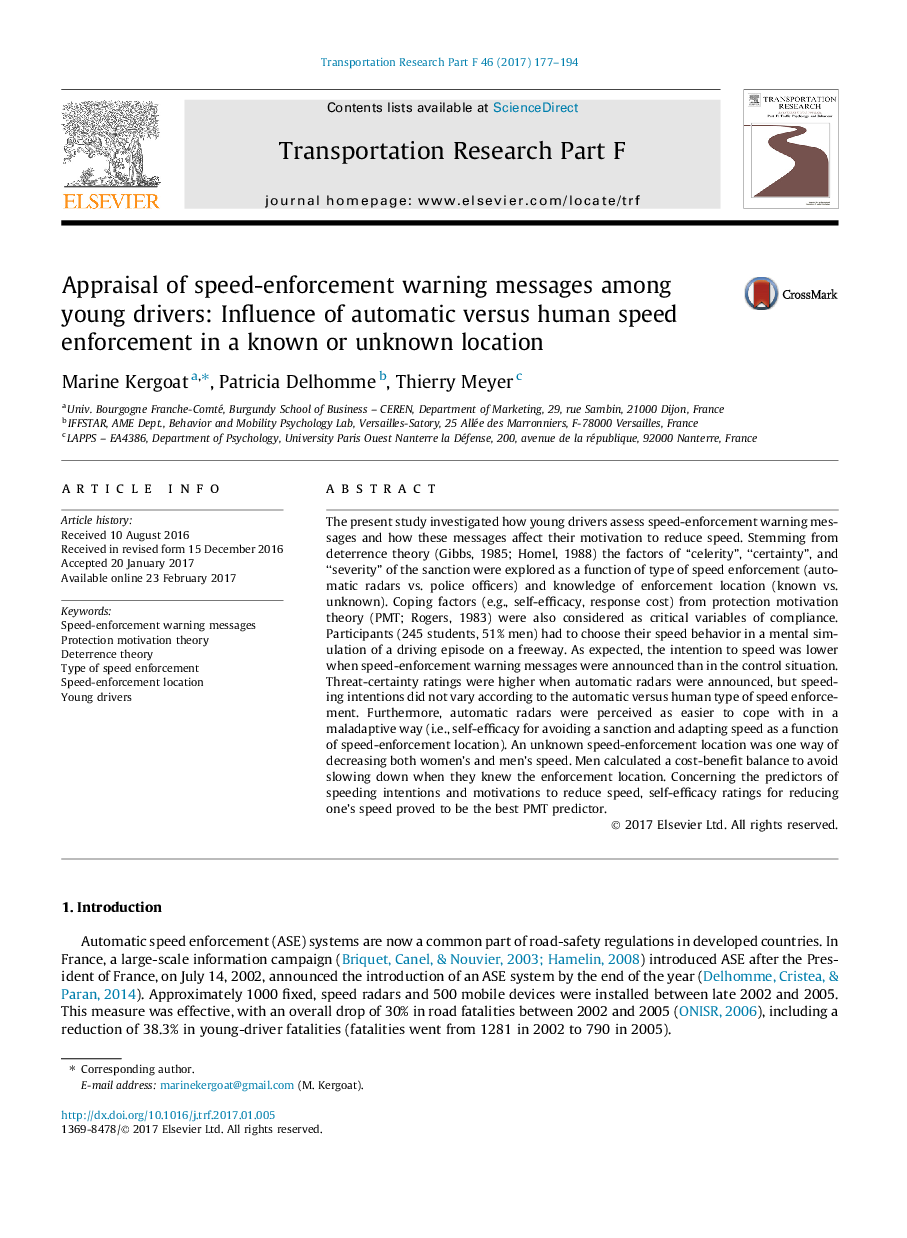| کد مقاله | کد نشریه | سال انتشار | مقاله انگلیسی | نسخه تمام متن |
|---|---|---|---|---|
| 5037439 | 1370222 | 2017 | 18 صفحه PDF | دانلود رایگان |
- Drivers judge automatic radar controls as easier to avoid than police officers.
- Reducing speed is more effortful when automatic radars are announced.
- Contrary to women, men perform a cost-benefit analysis to regulate their speed.
- Speed enforcement in an unknown location enhances drivers' motivation to reduce speed.
- Higher self-efficacy for reducing speed all along a trip predicted a lower speed.
The present study investigated how young drivers assess speed-enforcement warning messages and how these messages affect their motivation to reduce speed. Stemming from deterrence theory (Gibbs, 1985; Homel, 1988) the factors of “celerity”, “certainty”, and “severity” of the sanction were explored as a function of type of speed enforcement (automatic radars vs. police officers) and knowledge of enforcement location (known vs. unknown). Coping factors (e.g., self-efficacy, response cost) from protection motivation theory (PMT; Rogers, 1983) were also considered as critical variables of compliance. Participants (245 students, 51% men) had to choose their speed behavior in a mental simulation of a driving episode on a freeway. As expected, the intention to speed was lower when speed-enforcement warning messages were announced than in the control situation. Threat-certainty ratings were higher when automatic radars were announced, but speeding intentions did not vary according to the automatic versus human type of speed enforcement. Furthermore, automatic radars were perceived as easier to cope with in a maladaptive way (i.e., self-efficacy for avoiding a sanction and adapting speed as a function of speed-enforcement location). An unknown speed-enforcement location was one way of decreasing both women's and men's speed. Men calculated a cost-benefit balance to avoid slowing down when they knew the enforcement location. Concerning the predictors of speeding intentions and motivations to reduce speed, self-efficacy ratings for reducing one's speed proved to be the best PMT predictor.
Journal: Transportation Research Part F: Traffic Psychology and Behaviour - Volume 46, Part A, April 2017, Pages 177-194
